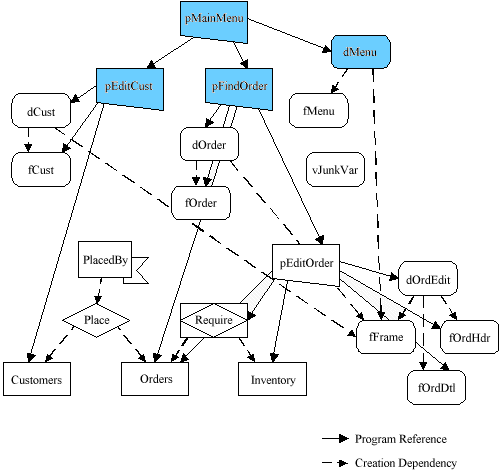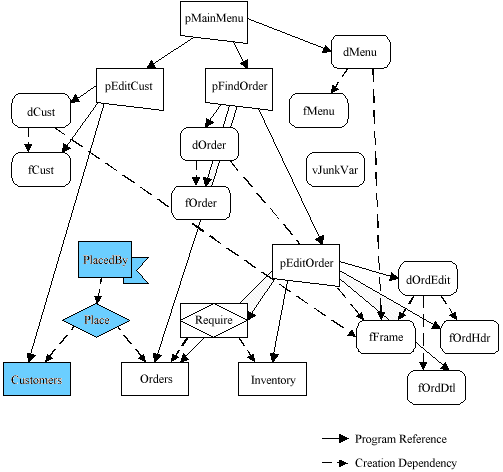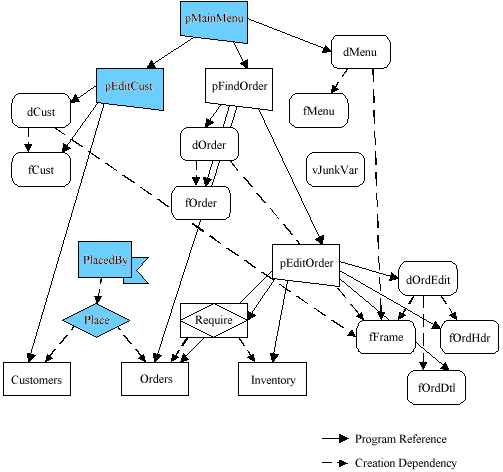Zim contains a number of fixed object types. The objects in any application depend on each other in various ways. These dependencies among objects form a network of interrelationships.
An EntitySet, for example, depends on its fields. If the definition of a field changes, then the definition of the EntitySet changes. A relationship object depends on the EntitySets that it is relating. A relationship object can also use constants, variables, and form fields, and so depend on those objects as well. A program can reference any object, including other programs. These references create dependencies between the program and the objects referenced.
ZOM tracks dependencies between objects. There are two basic kinds of dependencies:
- Creation Dependency
- Program Call Dependency
A Creation Dependency occurs when an object references another object in its definition (i.e., when the object is created).
A Program Call Dependency occurs when a document object references another object in its program code.
The diagram below shows the objects in a hypothetical application. The lines between objects illustrate dependencies between objects. This diagram is called the object dependency tree. Program that call dependencies are shown as solid black lines, while creation dependencies are shown as dotted lines.
The sample application represented here has four program objects: pMainMenu, pEditCust, pFindOrder, and pEditOrder. pEditCust and pFindOrder are called from pMainMenu. pEditOrder is called from pFindOrder. Each of these programs uses a different display object (whose names all start with “d”). The display objects, in turn, depend on form objects (whose names all start with “f”). As well, there are three EntitySets, Customers, Orders and Inventory, and two relationships, Place and Require, the latter with fields.
If we look at the object dOrder, we can see that dOrder depends on (i.e., uses) both fOrder and fFrame (via creation references). On the other hand, dOrder is depended on (i.e., used) by the program pFindOrder (via a program reference). The object fOrder depends on no other objects, but is depended on by dOrder and pFindOrder.
Example Object Dependency Tree

ZOM enables you to query the dependencies between objects and use this information to process dependent objects. You can also use this information to detect unreferenced objects that are not dependent on any other object.
There are two ways to query object dependencies:
- A Dependency Explosion finds the objects that depend on (i.e., use) a given object. Dependency explosion begins with an object and works up the dependency tree finding objects that use the given object. You can limit the explosion to one level up the tree (i.e., immediate ancestors) or recursively retrieve dependent objects all the way back to the root of the tree.
- A Dependency Implosion finds the objects that are depended on (i.e., used) by a given object. Dependency implosion begins with an object and works down the dependency tree finding objects that are used by the given object. You can limit the explosion to one level down the tree (i.e., immediate descendants) or recursively retrieve dependent objects all the way to the leaves of the tree.
The dependency information tracked by ZOM leads to some of the most powerful uses of the ZOM services in developing, maintaining, and analyzing your applications.










